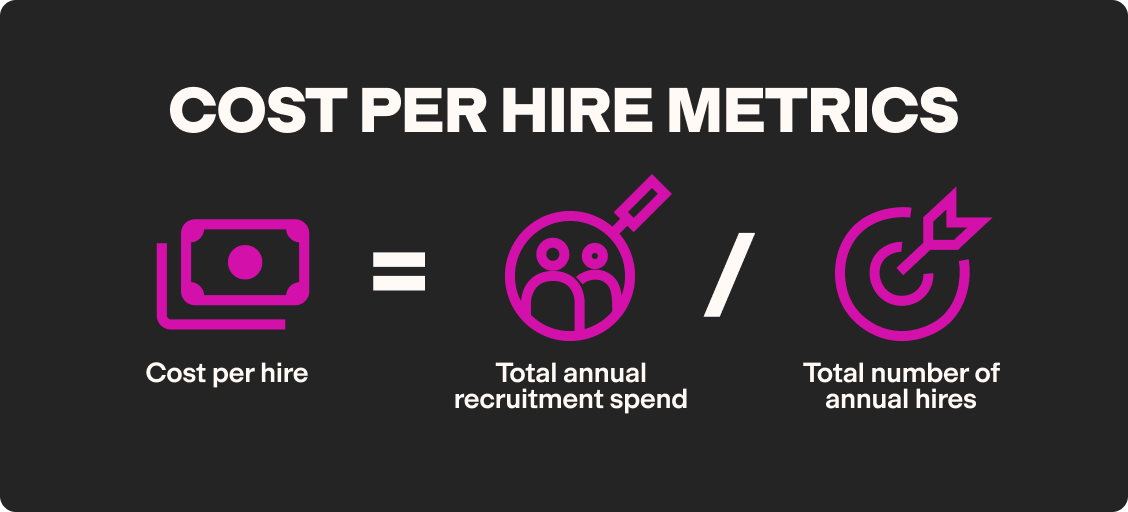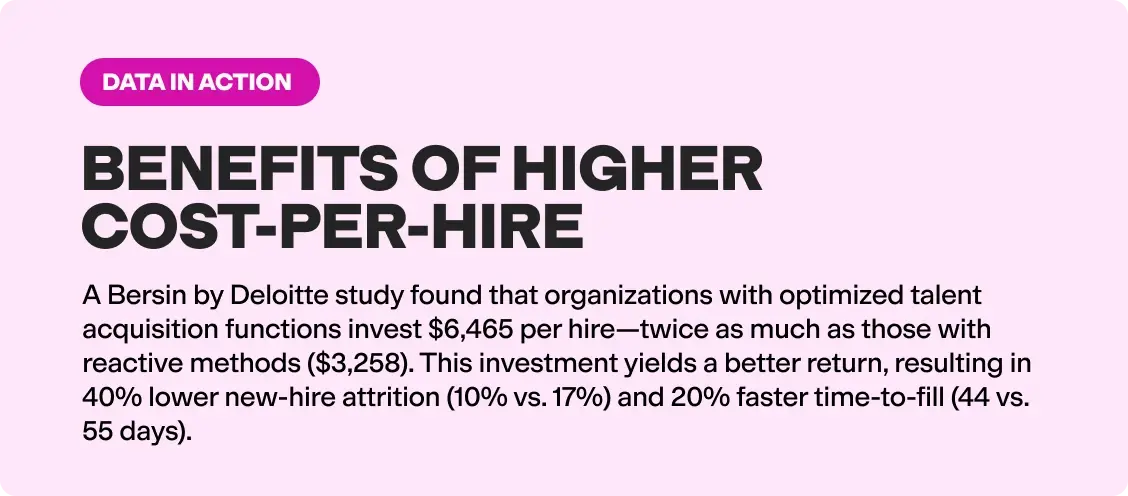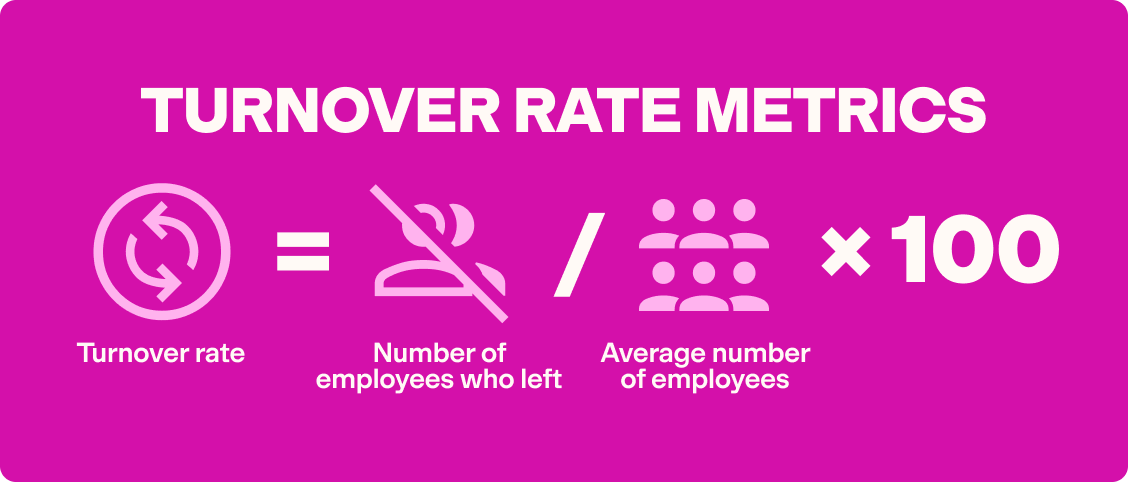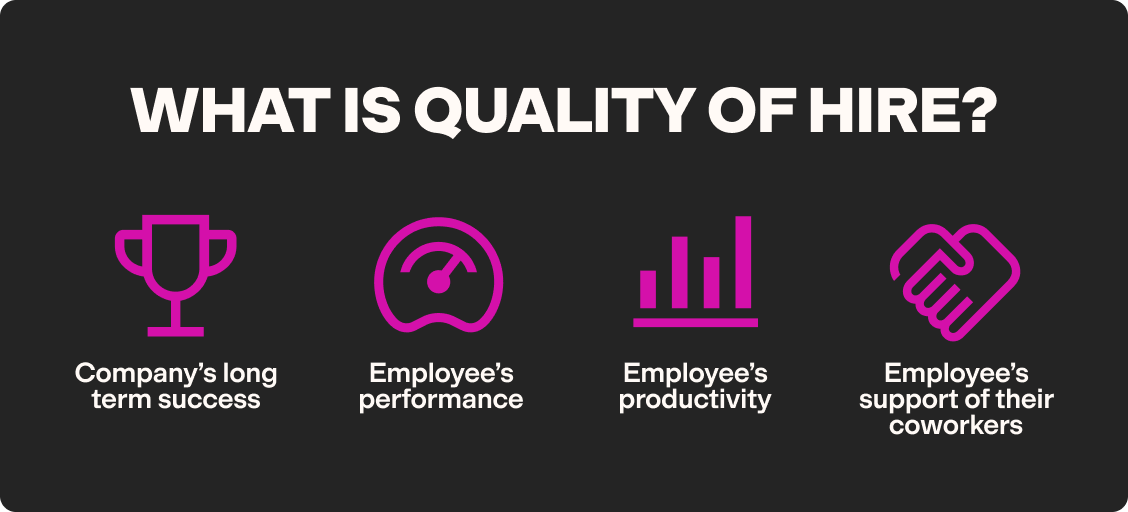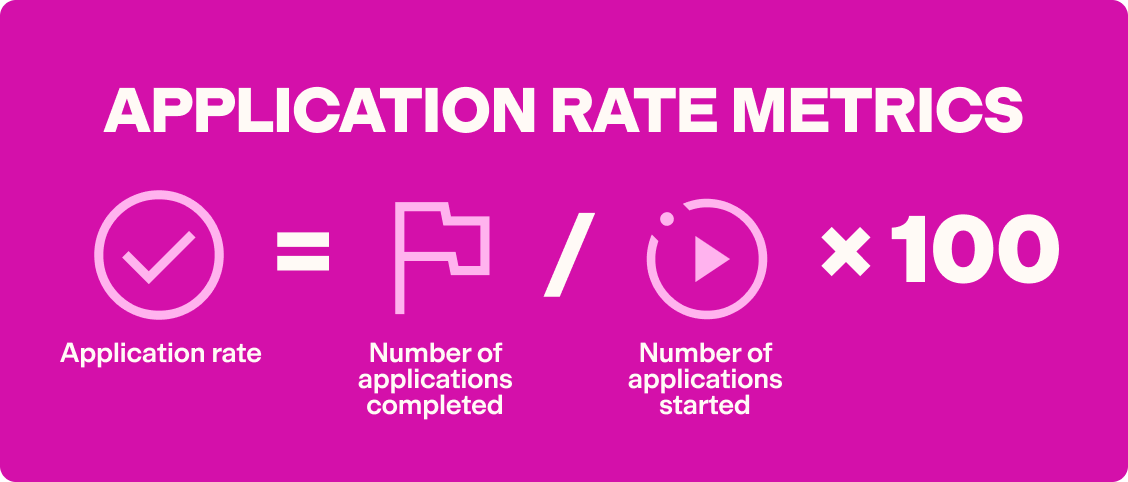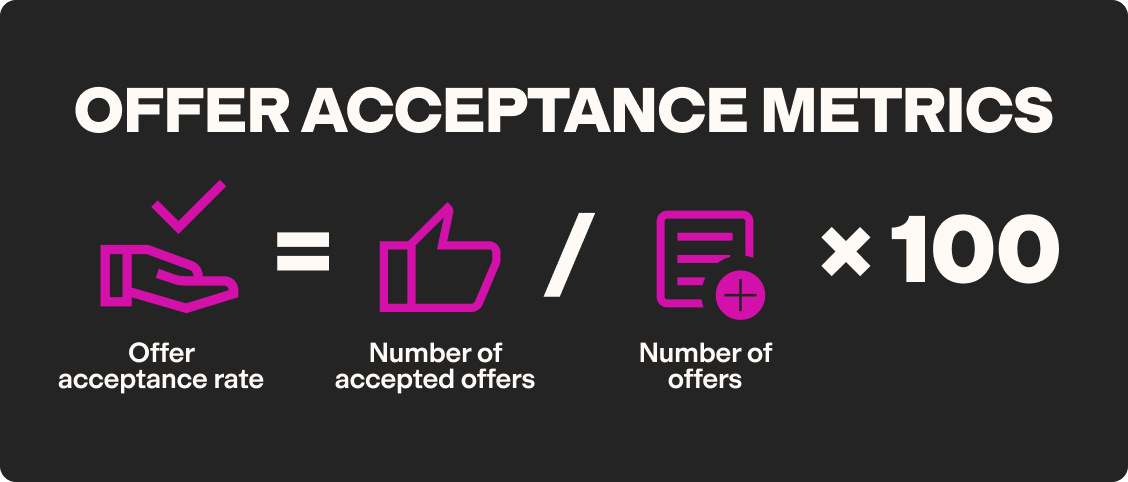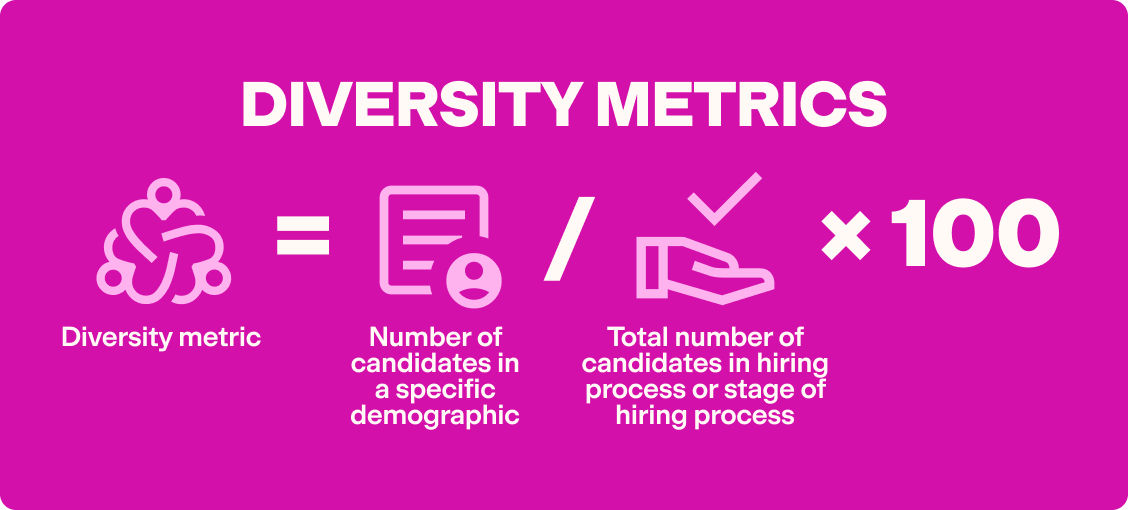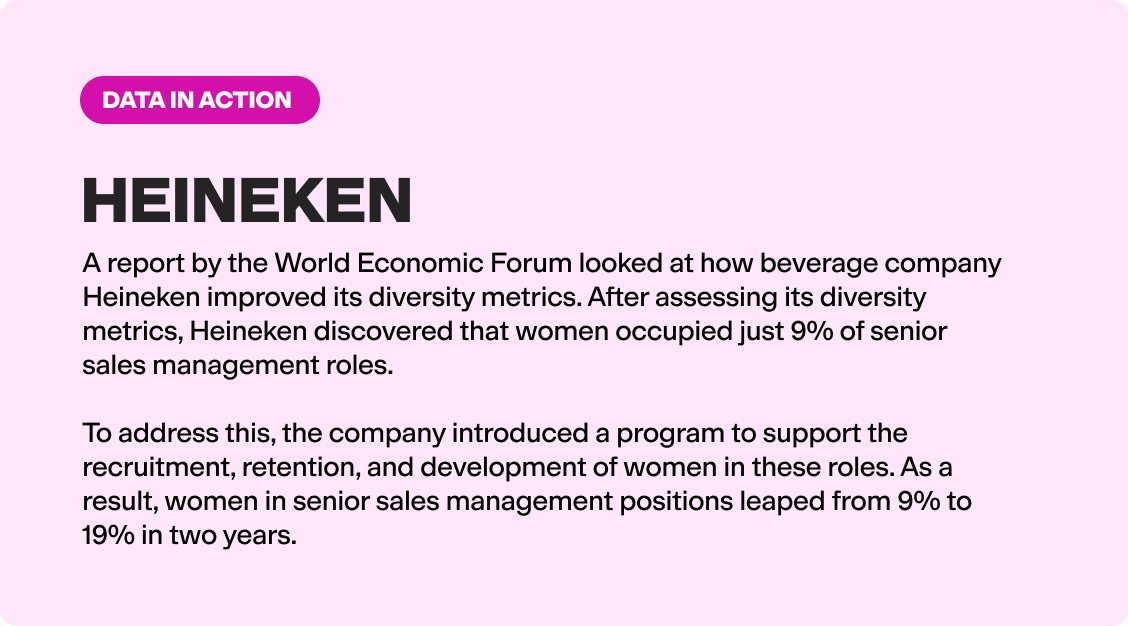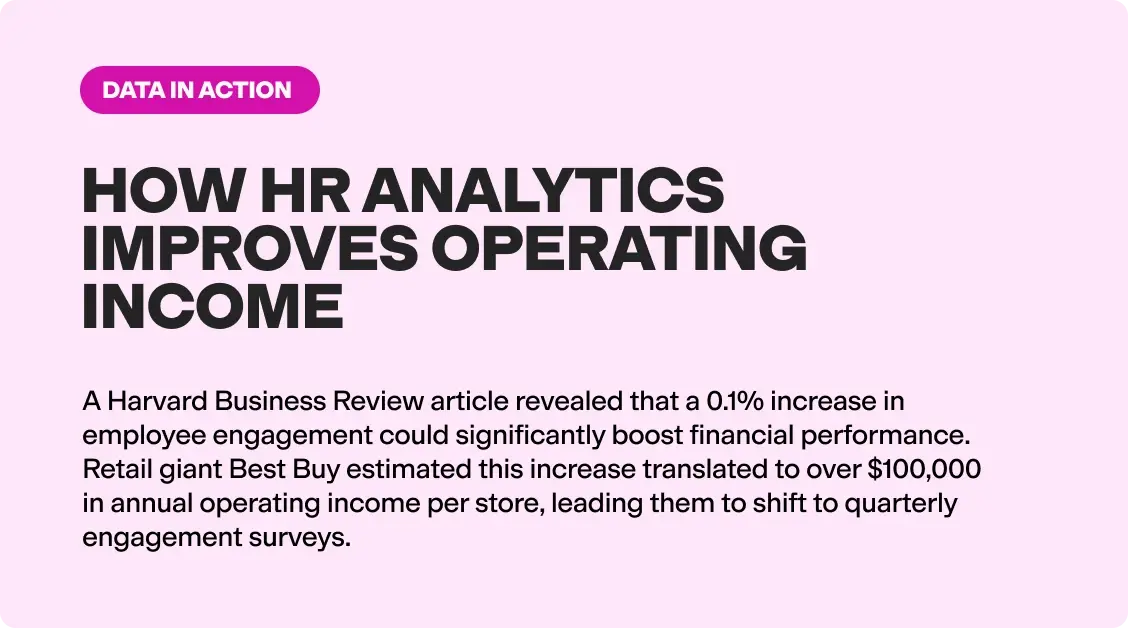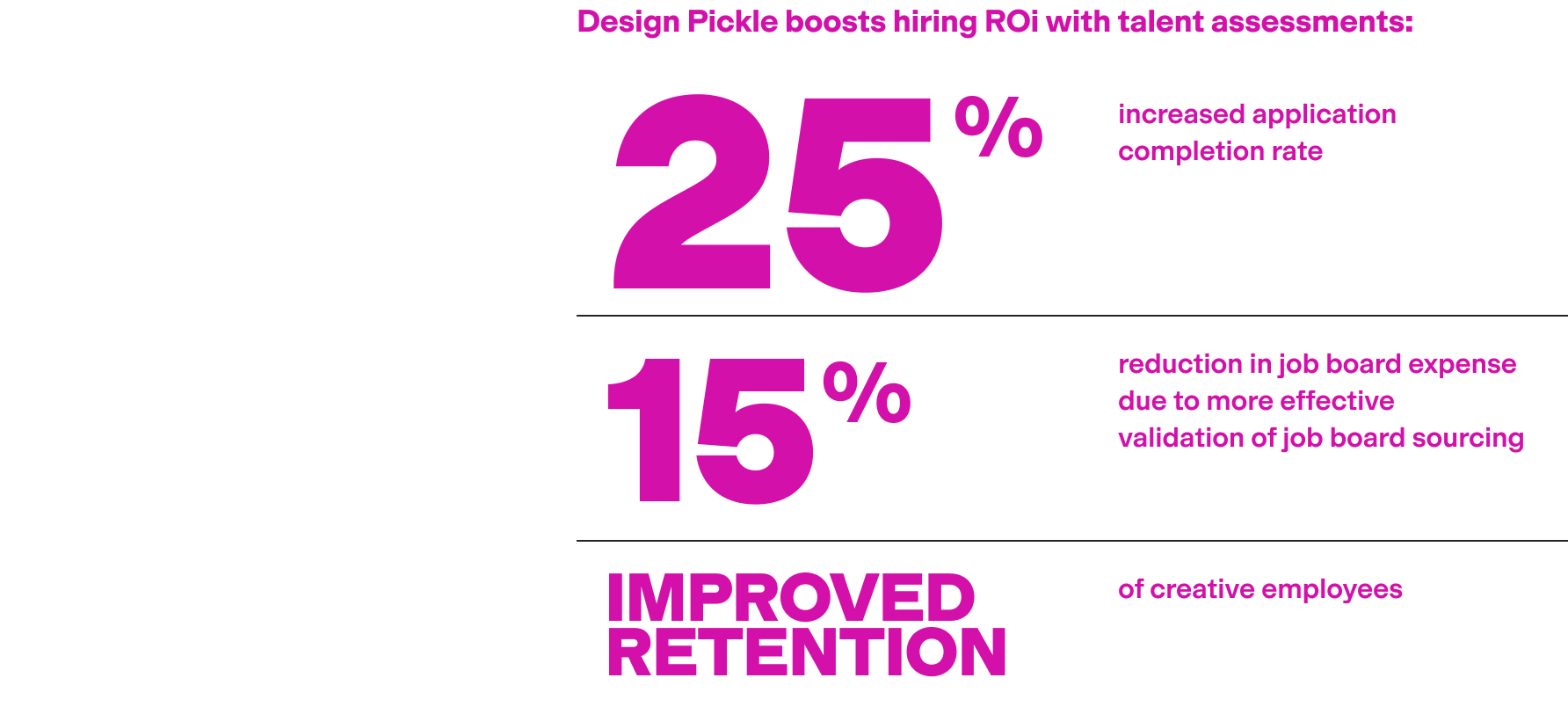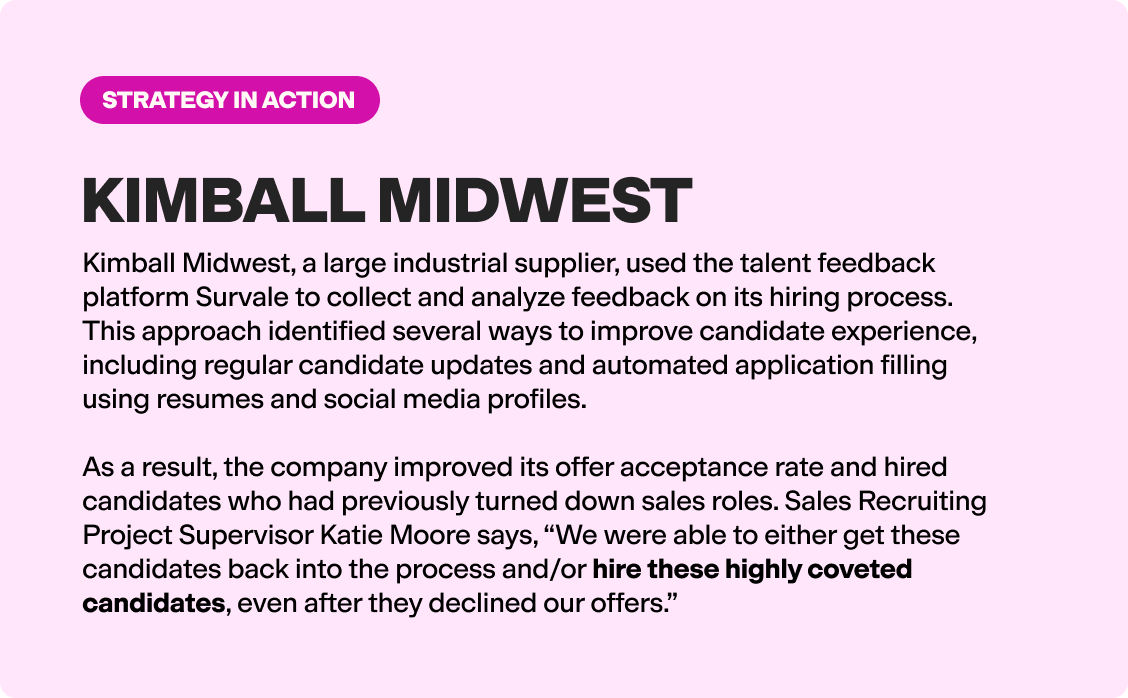The blueprint for boosting your recruitment ROI
Every HR team wants to find the best talent without overspending, but relying on intuition won’t get the job done. Successful hiring needs a clear strategy, the right tools and metrics, and a plan that leads to great hires every time.
Read on, for a step-by-step blueprint to boost your recruitment ROI, complete with checklists and an interactive tool to show how much you could save by refining your hiring approach.
01 Introduction
According to the Society for Human Resource Management (SHRM), hiring a new employee costs almost $4,700. And that’s only a starting point. This figure can rise depending on the industry and market conditions, with some employers reporting new hire costs running up to three to four times an employee’s salary.
The best way to reduce these costs is to maximize your recruitment return on investment (ROI). This metric shows you how well your hiring strategies are working. It highlights where you can make changes to save money and improve quality of hire, ultimately boosting your bottom line.
But how can you do this? We’re here to explain.
This guide covers the key metrics that offer eye-opening insights into your hiring process and the strategies and tools you can use to improve these metrics and your recruitment ROI.
02 Seven key recruiting metrics
Recruiting metrics (aka hiring metrics) are key performance indicators (KPIs) that help you measure the effectiveness of your hiring processes. By understanding and tracking these metrics, you can identify problems affecting your bottom line and figure out how to address them.
Here are seven metrics to track to increase your recruitment ROI:
02.1
02.1
1. Time to hire
Usually measured in days, time to hire is the time between when a candidate submits their application and when they accept a job offer.
This metric shows you how efficient and enjoyable your hiring process is, helping you spot bottlenecks and assess the quality of the candidate experience.
The standard time to hire varies by location and industry. 2023 research from Alexander Mann Solutions and the Josh Bersin Company found that the global average time to hire is currently 44 days (an all-time high), with higher rates in the professional services and energy and defense sectors.
02.2
02.2
2. Cost per hire
Cost per hire tells you how much you spend recruiting new employees. It looks at your total recruitment spend over the year, including internal costs (such as your hiring team’s salary) and external costs (such as agency fees and job board postings).
Recruitment costs add up quickly, and it’s easy to see why when you start breaking them down:
Job board listing | $100 |
Maintenance of company careers page | $500/year |
Hiring manager salary | $65,000/year |
Recruiter salary | $55,000/year |
HR training | $2,000/recruiter/year |
HR software subscription fees | $7,000/year |
Pre-employment testing | $50 |
Background check | $80 |
Onboarding | $1,200 |
02.3
02.3
3. Turnover rate
Turnover measures the number of employees who leave your organization over a certain period. It includes voluntary separations, terminations, and retirements.
To calculate turnover rate, you first need to know the average number of employees you had during the chosen period. To do this, add the number of employees at the start of the period and the number of employees at the end and divide by two.
This is an important metric to track because turnover costs—including the time a position is unfilled and the costs of finding a new hire—can significantly drain your organization's resources, undermining your recruitment ROI.
Understanding your turnover rate can also highlight problems with mis-hires, workplace environment issues, and mismatches between employees’ expectations and what the job involves.
The average turnover for your business depends on its industry and location. If you’re based in the US, check out the Bureau of Labor Statistics website for turnover data by industry.
💡Pro tip: It’s important to know the metrics related to but different from turnover. These include:
📉 Attrition rate – the rate of employees leaving an organization without being replaced, resulting in a workforce reduction.
🔒 Employee retention rate – the rate of employees who stay with an organization over some time.
02.4
02.4
4. Quality of hire
Quality of hire refers to the value a new employee brings to a business.
This metric offers helpful insights into the effectiveness of your recruitment processes and talent-sourcing strategies. In other words, are you finding the best people for the job?
Despite being a more complicated metric to track, quality of hire is an essential one. It is predicted to be the top recruiting priority in 2024.
There’s no single formula to measure quality of hire; companies usually use a mix of metrics that fit their idea of what makes a good hire. These metrics can include:
📊 Employee engagement rates 🔄 Turnover and/or retention rate ⭐ Job performance scores 🔍 360-degree feedback scores 📈 Productivity rates 💰 Sales targets
02.5
02.5
5. Application completion rate
The application completion rate compares the number of applications started versus those completed, indicating how efficient your hiring process is.
It can also tell you about the candidate experience, helping you identify the stage in your hiring process where most candidates drop off. This can highlight underlying issues you need to address, such as:
👎 A lengthy application process.
👎 Poor communication with candidates.
👎 Negative interview experiences.
👎 Technical issues with the software you use during the hiring process.
So, what application completion rate should you be aiming for? According to Appcast, the median application completion rate is 4.34%.
02.6
02.6
6. Offer acceptance rate
The offer acceptance rate compares the number of job offers you make versus the number of job offers candidates accept. This metric helps you gauge how attractive your job offers are and whether they appeal to the right candidates.
From an ROI perspective, it’s crucial to understand your offer acceptance rate, as a low rate costs you money. When a candidate declines an offer, you often need to repeat some or all of the hiring process, which is time-consuming and expensive.
Low offer acceptance rates also suggest you have trouble hiring top talent. It can highlight potential mismatches between candidate expectations and your offer or problems with your employer brand.
While the average offer acceptance rate is 81%, according to recruitment software Ashby, you ideally want an offer acceptance rate close to 100%.
02.7
02.7
7. Diversity metrics
Diversity metrics measure how certain demographic groups – such as gender, race, and LGBTQ+ identities – are represented in your hiring process.
These metrics indicate how good your organization is at attracting, selecting, and hiring candidates from diverse backgrounds. Not only is this important for diversity and inclusion, but it also impacts your bottom line. Workplace diversity is directly related to increased employee productivity and retention and is an important part of the employer branding puzzle. These factors lead to a more profitable and sustainable business.
Your metrics may reveal underlying issues such as non-inclusive language in job postings, an overreliance on a specific candidate source, or a more fundamental problem like unconscious bias in your hiring process.
Looking for a handy reference guide to help you understand key HR metrics?
Check our our hiring metrics cheat sheet for a full breakdown of calculations, the strategies to improve them, and the tools you can use
03 Strategies to boost recruitment ROI
You’re tracking your hiring metrics - great! But what’s next?
Let’s dive into five different strategies you can use to tackle any issues your recruitment metrics reveal and supercharge your recruitment ROI.
03.1
03.1
Strategy 1: Tracking hiring metrics for data-driven decision-making
Tracking your hiring metrics helps you make better hires in less time, using fewer resources. As a result, you can improve your recruitment ROI (and bottom line) by:
Identifying problems or bottlenecks in your hiring process and their underlying causes.
Aligning recruitment with your organization’s strategic goals.
Supporting data-driven decision-making. For example, when investing in a new hiring tool, you can track the relevant metrics before and after introducing it to ensure the tool has the desired effect. You can also use metrics to make the business case for investments in your hiring process, ensuring you’re spending money on the right solutions.
Problems it helps you solve
✅ Lengthy time to hire
✅ High cost per hire
✅ High turnover rates
✅ Not knowing where to start refining your hiring process
✅ Lack of insight into what’s working/not working
03.2
03.2
Strategy 2: Adopt a skills-based approach to hiring
With a skills-based hiring approach, you prioritize candidates’ skills over their qualifications or specific experience. Data shows that this method can significantly improve important hiring outcomes and maximize recruitment ROI.
Our research for our 2024 State of Skills-Based Hiring report revealed that by taking a skills-first approach:
⭐81% of employers experience reduced time to hire, saving between 412 and 792 hours per senior management role and 33 to 660 hours per non-senior hire.
⭐ Most employers reduce their cost per hire by 26-50%, saving an average of $1,218 to $2,342 per role.
⭐ 91% of employers improve retention rates.
⭐ 94% say skills-based hiring is more predictive of performance than resumes, leading to better quality hires and significant savings by reducing mis-hires.
⭐ 90% of employers report improved diversity, with 34% reporting a significant positive impact (26-50%).
Orbit technologies cut new hire attrition rates by 50% using skills-based hiring
Find out how implementing skills assessments helped them hire best fit candidates
Not sure where to start with skills-based hiring? Try these practices:
🔍 Remove college degree requirements, where they’re unnecessary for the role, from job descriptions. This trend is growing in both the public and private sectors in response to degree inflation. 🌈 Use inclusive language in job postings. You could add a DEI statement to your job ads and use gender-neutral language like “they” to refer to candidates. 🤝 Expand your hiring sources to ensure candidates who are skilled through alternative routes (STARs) can apply. For instance, consider partnering with a community college to source candidates. 🧪 Use talent assessments. Multi-measure assessments give you insights into candidates' soft, hard, and job-specific skills. By including testing in the early stages of your hiring process, you can quickly shortlist top talent, saving you time and money. ❓ Include skill-centric questions in interviews. Asking these questions lets you explore candidates’ hard, soft, and transferable skills. Their answers give you deeper insights into their role-specific knowledge and abilities beyond their resumes. 🎯 Take a more targeted approach to recruitment by identifying and hiring for skills gaps. The first step towards this is to do a skills gap analysis to understand what skills your organization has and needs.
The great thing about skills-based hiring is that even small changes can boost ROI. According to McKinsey, one business reported a significant shift from attracting one unsuitable candidate to 18 well-qualified candidates using a skills-based job posting.
Problems it helps you solve
✅ Lengthy time to hire
✅ High cost per hire
✅ Mis-hires and low-quality hires
✅ High turnover rate
✅ Bias in hiring decision
03.3
03.3
Strategy 3: Automate your recruitment
Using technology to automate repetitive tasks in your recruitment process can improve the candidate experience and cut hiring costs.
Try using recruiting automation to create job ads, test candidates’ skills, update candidates on their progress, and schedule interviews. This makes recruitment faster and frees the hiring team to focus on more strategic work. It also helps you avoid losing top talent due to a slow process – especially during large hiring pushes.
However, it’s essential to be strategic. Some parts of hiring, such as interviews, shouldn’t be automated. After all, hiring is about people, and human involvement is key to giving candidates the experience they expect.
When used correctly, recruitment automation can deliver massive ROI.
For example, Dyninno Group - a large international group of companies - needed to fill over 2,000 positions in less than six months. It used TestGorilla’s assessments to streamline its recruitment and quickly find candidates with the right skills.
As a result they were able to achieve the following outcomes:
Problems it helps you solve
✅ Lengthy time to hire
✅ High cost per hire
✅ Low application completion rate
✅ Low offer acceptance rate
03.4
03.4
Strategy 4: Leverage employee referrals
Research shows that employee referrals bring in candidates who are:
✅ Higher quality than those from general recruitment processes.
✅ More likely to accept a job offer.
✅ More likely to stay long-term.
In other words, using employee referrals can make your hiring more efficient – thus improving your recruitment ROI and bottom line.
We can see the real-life impact of this in companies that use employee referral programs.
For instance, fuel retailer TriStar Energy struggled to attract long-term employees. To address this, it started using ERIN, a digital employee referral platform. As a result, TriStar Energy boosted average employee retention from 30 days to 6 months while reducing cost per hire.
💡 Pro tip: Don’t rely exclusively on employee referrals. Use them alongside other candidate sources and hiring strategies to keep your recruitment fair and supportive of diversity.
Not sure how to start an employee referral program?
Read our detailed guide and find out everything you need to know.
Problems it helps you solve
✅ Lengthy time to hire
✅ High cost per hire
✅ Mis-hires and low-quality hires
✅ High turnover rates
03.5
03.5
Strategy 5: Conduct structured interviews
Structured interviews – where the hiring panel asks all candidates the same questions – are an excellent tool for improving your recruitment ROI. According to research by McGill University, these interviews are one of the most effective predictors of job performance, highlighting their potential impact on quality of hire.
They can also help you:
Ensure a consistent approach, regardless of who’s conducting the interview. This promotes hiring fairness.
Shorten time to hire, as you only need to prepare one set of questions for a role. Standardized questions also make it easier to compare candidates’ answers.
Reduce the risk of unconscious bias by focusing on candidates’ skills over anything else, including personal characteristics.
Boost offer acceptance rate by allowing you to prepare questions that clearly convey the role’s expectations to candidates.
Problems it helps you solve
✅ Lengthy time to hire
✅ Bias in hiring
✅ Mis-hires and low-quality hires
✅ Low offer acceptance rates
04 Tools to maximize ROI and track success
Hiring data and strategies give you the blueprint and instructions for boosting your recruitment ROI. But you still need the right tools to get the job done.
Here are five resources you can use to put your plan into action:
04.1
04.1
HR analytics tools
Various software solutions can measure, track, compare, and analyze key HR metrics, including recruitment metrics. These tools can help you answer questions about your hiring process – why is something an issue, and how can you improve it?
Choosing the right analytics tool for your organization depends on:
The in-house skills you have.
Your recruitment budget.
The level of analysis you need.
For instance, if you have employees with data science skills, they can use programming languages like R and Python to analyze large datasets and measure hiring metrics.
If you want a solution that offers built-in analytics, platforms like Visier and DreamTeam include dashboards and reports to help you visualize key metrics. These resources are handy when building buy-in for new recruitment strategies and initiatives.
04.2
04.2
Applicant Tracking Systems (ATS)
ATS software helps you manage and track candidates, streamlining the hiring process. Most solutions offer features to automate different parts of recruitment, such as candidate emails and interview scheduling.
ATSs can also help you collect hiring data. Many include analytics features to generate reports on metrics like time to hire and offer acceptance rate. With these features, you can use an ATS to review your recruitment metrics regularly and improve your hiring process.
There are various ATSs on the market, and it pays to try a few to find the one that best suits your business’s needs.
💡 Pro tip: Make sure the ATS you choose integrates with your existing tech stack to avoid workflow disruptions and siloed data.
04.3
04.3
Talent assessment
Pre-employment skills testing, or talent assessment, is a key tool for adopting a skills-based approach to hiring.
With unbiased insights into candidates’ cognitive abilities, job-specific skills, and cultural fit, you can identify suitable candidates early in the process. This reduces hiring time and the risk of costly mis-hires.
For example, using skills testing, an organization with 100 employees looking to hire 15 people in the next 12 months can achieve the following outcomes:
The real-life results speak for themselves. TestGorilla’s clients have seen impressive improvements in key hiring metrics using our talent assessments.
For instance, creative services platform Design Pickle struggled to administer manual assessments to candidates for creative roles and manage a growing candidate pool. The company saw high candidate drop-off rates and a lengthy time to hire.
Calculate the bottom-line value talent assessments bring to your business.
Use our ROI calculator to how much you'll save by reducing cost-per-hire, hiring time, and mis-hire rates.
04.4
04.4
Skills gaps analyses
A skills gap analysis gives you a snapshot of the skills within your organization – and the skills you need to bring in through new hires. With this information, you can fine-tune your hiring strategies to target the exact skills you need. This helps you reduce both time to hire and cost per hire.
Additionally, you can create better, more accurate job descriptions and postings so candidates have a clear picture of what you’re looking for and whether they’re suitable for the role. This encourages best-fit candidates to apply, improving quality of hire and reducing turnover.
04.5
04.5
Candidate feedback tools
Candidate feedback tools provide detailed qualitative and quantitative insights into the candidate journey. You can then use these to identify ways to improve your hiring process and your hiring metrics.
Here are some tools and channels you can use to collect candidate feedback:
📝 Online candidate reviews. 💬 Social media comments from candidates. 📊 Talent feedback software. 📋 Candidate experience surveys.
Delivering the best candidate hiring experience helps you stand out as an employer, attract top talent and diverse candidates, and reduce candidate drop-offs. In turn, you’ll see more completed applications, higher offer acceptance rates, and better-quality hires.
05 Conclusion
There’s no avoiding the fact that recruiting new hires – especially outstanding ones – costs money. Luckily, there are ways you can reduce recruitment costs while hiring more effectively.
The starting point is key hiring metrics, which give you a clear picture of your hiring processes and areas for improvement. Once you understand what needs to be improved, you can then implement strategies to maximize your recruitment ROI, including:
📈 Understanding and tracking key hiring metrics. 🔍 Adopting a skills-based approach to recruiting. 🤖 Automating repetitive recruitment processes. 🤝 Using employee referrals to source top-quality candidates. 🗣️ Conducting structured interviews.
You have various tools to help successfully implement these strategies, such as pre-employment assessments, HR analytics platforms, and skills gap analyses. By choosing the ones that best complement your strategies, you can move your hiring metrics and significantly boost your recruitment ROI.
06 Sources
PR Newswire. (2023, June 12). New research shows that hiring is harder than ever: Time-to-hire increasing significantly for almost all roles. PR Newswire. https://www.prnewswire.com/news-releases/new-research-shows-that-hiring-is-harder-than-ever-time-to-hire-increasing-significantly-for-almost-all-roles-301839785.html
Society for Human Resource Management. (n.d.). The real costs of recruitment. SHRM. https://www.shrm.org/topics-tools/news/talent-acquisition/real-costs-recruitment
We Are AMS. (2023). The talent climate series: Time-to-hire. We Are AMS. https://www.weareams.com/stories/the-talent-climate-series-time-to-hire
U.S. Bureau of Labor Statistics. (2023, July). Job openings and labor turnover survey (JOLTS) [PDF]. https://www.bls.gov/news.release/pdf/jolts.pdf
Fechter, J. (2019, June 4). Why data is more essential than ever in HR. Fast Company. https://www.fastcompany.com/90357244/this-is-why-data-is-now-more-essential-than-ever-in-hr
Appcast. (2023). 2023 recruitment marketing benchmark report. Appcast. https://info.appcast.io/whitepaper/2023-recruitment-marketing-benchmark-report
AshbyHQ. (2023). 2023 talent trends report: Offer acceptance rates. AshbyHQ. https://www.ashbyhq.com/talent-trends-report/reports/2023-trends-report-offer-acceptance-rates
World Economic Forum. (2023). Diversity, equity, and inclusion lighthouses [PDF]. https://www3.weforum.org/docs/WEF_Diversity_Equity_and_Inclusion_Lighthouses_2024.pdf
McKinsey & Company. (2023, May). Taking a skills-based approach to building the future workforce. McKinsey & Company. https://www.mckinsey.com/capabilities/people-and-organizational-performance/our-insights/taking-a-skills-based-approach-to-building-the-future-workforce
Huffcutt, A. I., & Arthur, W. (1994). Structured interviews and their use in personnel selection [PDF]. McGill University. https://www.mcgill.ca/psychology/files/psychology/structuredinterviews.pdf
Visier. (2023). Financial services improve hiring processes with data-driven insights. Visier. https://www.visier.com/customers/financial-services-improved-hiring-process
BambooHR. (n.d.). The Centre for Family Medicine: Improving recruitment with BambooHR. BambooHR. https://www.bamboohr.com/customers/the-centre-for-family-medicine
07 About TestGorilla
TestGorilla is a talent discovery platform that is shaping the future of work through skills-based hiring. Our library of over 400 scientifically validated, skills-based tests offers a scalable way for companies to hire better, faster, and without bias. Meanwhile, candidates use TestGorilla to discover and showcase their skills and potential, ensuring all talent gets a shot at landing their dream job.
Our globally distributed team provides over 10,000 customers and millions of candidates with skills-based testing and talent discovery solutions. TestGorilla is ranked number 1 on G2 for talent assessment software, and has been recognised globally for its growth and impact – we’ve been named twice in Sifted's B2B SaaS Rising 100, and regularly top G2's list of fastest growing software.
Implement skills-based hiring with TestGorilla
If you're looking for a pre-employment testing tool to use for skills-based hiring, try TestGorilla. We've got 400+ skills tests designed to help you hire top talent in a fair and data-driven way. Book a free consultation with our team or try for free today.




